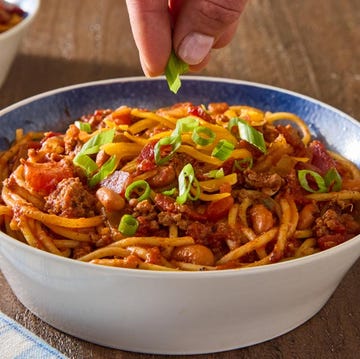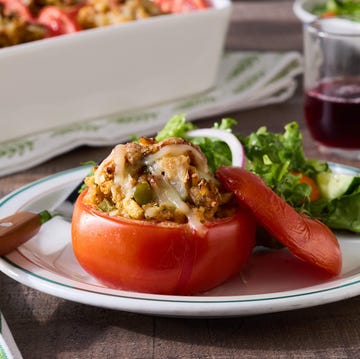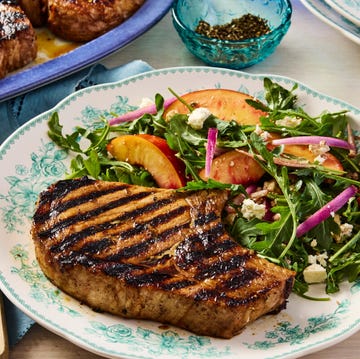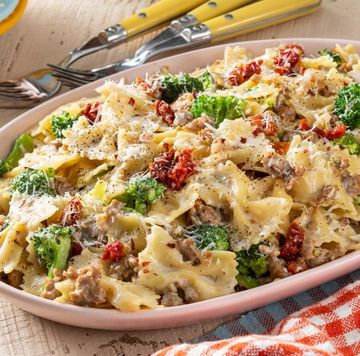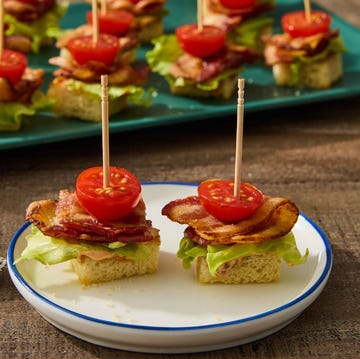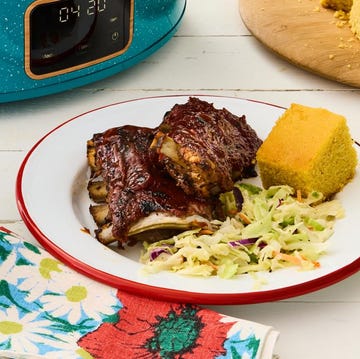Easter just wouldn't be the same without a big, juicy glazed ham at the center of the table. But how big does it really need to be? That's the question every host faces when planning Easter brunch or Easter dinner. You want to make sure there's plenty to go around (plus a little extra for your favorite leftover ham recipes). So, before you decide between a slow-cooker ham or a root beer glazed ham, check out our handy tips for holiday shopping, including exactly how much ham to buy per person.
The good news is, it's simple! All you need is a quick calculation to figure out how much ham you'll need based on the number of guests at your Easter table. Whether you're serving a bone-in ham or a boneless ham, we've got a simple guide to help plan your Easter menu down to the last bite. You can also adjust the amounts based on your family's preferences. For instance, if you know that your family has a cowboy-sized appetite, you might want to add an extra pound or two just to be safe.
With this foolproof guide, you'll be ready to head to the store with confidence—and cooking your ham will be even easier. Read on to find out how much ham to buy per person.
How much bone-in ham do you need per person?
A bone-in ham results in the most moist and flavorful meat. Plus, that bone can be used for ham stock later in the week. But when it comes to determining how much ham per person, you need to remember that the bone will add extra weight. Plan for 3/4 to 1 pound per person for a bone-in ham.
- For 6 people: 4 1/2 to 6 pounds
- For 12 people: 9 to 12 pounds
- For 20 people: 15 to 20 pounds
How much boneless ham do you need per person?
If you're looking for an easy way to carve a ham, a boneless ham might be for you. Plan to serve 1/3 to 1/2 pound per person for a boneless ham. If you have a ton of sides for your ham, you can probably lean more towards 1/3 of a pound, or make another main course, like a holiday pot roast.
- For 6 people: 2 to 3 pounds
- For 12 people: 4 to 6 pounds
- For 20 people: 6 3/4 to 10 pounds
Which is better: boneless or bone-in ham?
When choosing between boneless and bone-in ham, it all depends on what you're looking for. Bone-in ham is the more classic choice. It's juicy, flavorful, and makes for a beautiful holiday centerpiece with impressive presentation. Plus, you can use the leftover bone for soups and stews.
Boneless ham, on the other hand, is all about convenience. It's easy to slice, serve, and store, so it's great option if you want to keep things simple. While it might not have quite the same rich flavor as bone-in, a good ham glaze will more than make up for it. (Give this rich honey mustard glaze a try.)
The bottom line? If you want tradition and big flavor, go bone-in. If easy slicing is your priority, boneless is the way to go. Either way, your Easter meal will be delicious!
What should you do with leftover ham?
According to Ree Drummond, "Leftovers are one of the best parts!" And that's especially true if you have leftover ham. Aside from just slicing off pieces to snack on throughout the week, you can use your leftover ham for anything from breakfast casseroles to quick lunches to weeknight dinners. Just note that a cooked ham will only keep for three to four days after cooking, according to the USDA. You can freeze your cooked ham, too; but it's not preferred since it will lose its quality and texture. Instead, hand out leftovers to your guests or try one of our suggestions below:
It's delicious in simple ham sandwiches, but you can also get creative by making a leftover ham, Swiss, and pear panini. Alternatively, dice up some ham for a ham and cheese quiche or a comforting pasta with ham, leeks, and spinach. Of course, Ree's family favorite is scalloped potatoes and ham—it's a side dish you'll want to make again and again! And while you're at it, don't forget to save the ham hock for making homemade ham stock, split pea soup, or even collard greens.



